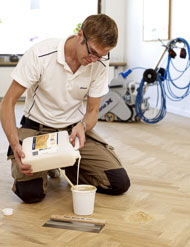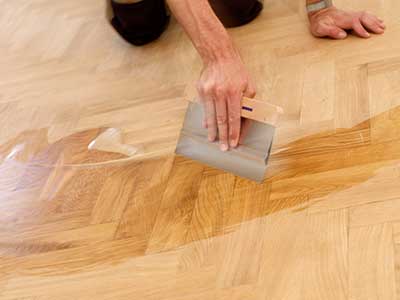Back to Floor Sanding
Gap Filling and Floor Restoration

Wood is a natural, hygroscopic material, meaning it can absorb and release moisture from the surrounding air. This property causes wood to expand and contract as environmental conditions change, such as fluctuations in humidity and temperature throughout the seasons. As the wood adjusts to these variations, gaps can form between the floorboards, which is a common issue in wooden flooring, especially in older installations or homes with fluctuating indoor climates.
Gaps, Draughts and Wooden Floors
Wood naturally swells in the warmer, more humid summer months and contracts as winter approaches, leading to the formation of gaps between floorboards. These gaps not only affect the visual appeal of your floor but also contribute to energy inefficiency by allowing cold air to circulate through your home. This can lead to uncomfortable draughts and increased heating bills during the colder months. Whether your goal is to improve the aesthetic appeal of your flooring or to reduce energy costs, gap-filling is an effective solution that addresses both issues, enhancing both the appearance and efficiency of your wooden floors.
What Causes Gaps and How to Prevent Them?
There are several reasons why gaps may form in wooden floors, ranging from poor-quality floorboards and inadequate installation to insufficient acclimatisation before fitting. Proper acclimatisation, where the hardwood is allowed to adjust to the room’s temperature and humidity for at least 7-10 days before installation, significantly reduces the risk of gaps forming later.
Gaps commonly appear during the winter due to low humidity levels, which cause the wood to release its moisture into the dry indoor air, leading to contraction. To prevent this, maintaining consistent room conditions is crucial. Using a house humidifier during the winter months can help maintain optimal humidity levels, reducing the chance of gaps appearing. In summer, an air conditioner can be beneficial in keeping the air cool and preventing excessive expansion.
However, not all gaps are related to changes in humidity and temperature. Poor installation, such as improper spacing or loose boards, can also cause gaps. In such cases, you have two options: sand the floor and fill the gaps with appropriate fillers, or consider a complete reinstallation. If you’re concerned about gap issues, it’s worth noting that engineered wood flooring is generally less susceptible to moisture-related problems and is less likely to develop gaps compared to solid hardwood.
How to Fill Gaps in Wood Flooring?
 There are several methods for filling gaps between floorboards, with two of the most popular being the use of filler resin and wood slivers. Each method has its advantages, and the choice depends on the size of the gaps and the desired outcome.
There are several methods for filling gaps between floorboards, with two of the most popular being the use of filler resin and wood slivers. Each method has its advantages, and the choice depends on the size of the gaps and the desired outcome.
Filler Resin for Smaller Gaps
Using a filler resin mixed with fine sawdust is a highly effective solution for gaps up to 6mm wide. The sawdust allows the filler to match the natural colour of the wood, creating a seamless appearance. This combination is cost-effective and frequently used in floor restoration. The sawdust is typically obtained from sanding the floor, ensuring an exact colour match.
Wood Slivers for Larger Gaps
For gaps over 6mm, gap filling with wood slivers (narrow strips of wood) is the better option. These slivers are cut and fitted into the gaps, providing a stable and visually cohesive result, especially suitable for older floors where gaps may be more pronounced due to natural wear and tear.
Neither method is inherently superior - they serve different purposes based on the extent of the gaps. A combination of sanding and gap filling is often recommended to ensure that the filler or slivers are properly integrated into the floor, creating a smooth, even surface ready for finishing.
Application Process
Applying resin is straightforward. Mix the resin with fine sawdust in a bucket, then apply it to the gaps using a filling knife or spatula. Work quickly, as resin tends to harden rapidly. Sand down any excess material after application to create a smooth surface before the final finish.
For wider gaps, using wood strips is preferred. These strips are cut from reclaimed pine or timber that closely matches your floor's colour and texture. They are glued and tapped into the gaps, then leveled off with a plane or sander. While this method is less common due to its higher cost and time requirements, it provides a robust and durable solution. However, wood slivers can sometimes split or restrict the natural movement of the floorboards.
Bona Gap Master Filler
For smaller gaps and minor repairs, Bona Gap Master filler is effective. This specialised filler matches various wood colours and is perfect for filling small gaps, cracks, and areas around beadings and skirting boards. Although more expensive, it offers superior flexibility with a 7% expansion rate and is odor-free.
Alternative Methods
Some alternative methods, such as PVA glue mixed with sawdust (now considered outdated) or papier-mâché for a rustic, vintage look, are less effective and not widely used in modern restoration projects.
For any gap filling needs or further advice, feel free to contact us at 020 88309782. We're here to help you choose the best method for your wooden floor restoration.